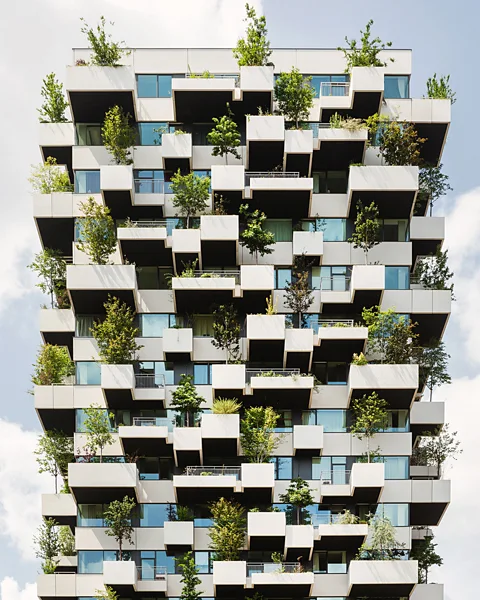 Eindhoven, Netherlands/ Stefano Boeri Architetti
Eindhoven, Netherlands/ Stefano Boeri ArchitettiIt’s been 10 years since the creation of the first vertical forest, Milan’s Bosco Verticale. How has it inspired other buildings – and affected their residents’ happiness and health?
In 2007, Italian architect Stefano Boeri witnessed the frantic construction of a city in the Dubai desert dominated by energy-wasting skyscrapers covered in glass, ceramic and metal. All these materials, he tells the BBC, “reflected sunlight, generating heat in the air and especially on the urban ground, where pedestrians walked”. Three thousand miles away, he had just begun working on his own design for two very tall buildings in a neglected area of northern Milan. “Suddenly, it occurred to me to create two biological towers… covered not with glass, but with leaves,” he says. The design would invite fauna and flora into this industrial wasteland and cool the air inside and out, offering a radical new architectural prototype that, he explains, “integrates living nature as a constitutive part of it”. The startling result was the world’s first “vertical forest”.
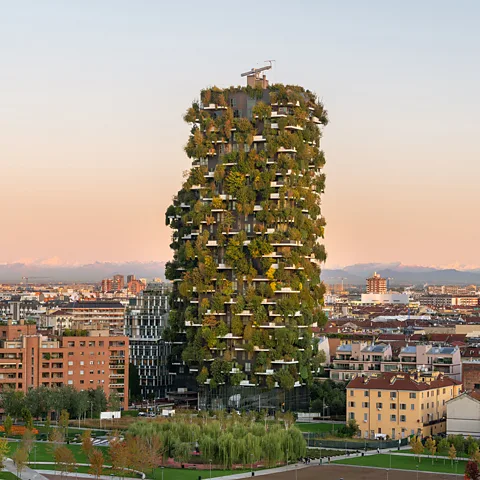 Boeri Studio/ Dimitar Harizanov
Boeri Studio/ Dimitar HarizanovThe multi-award-winning design is now 10 years old, its plants maintained by “flying gardeners” harnessed to the side of the buildings, and its occupants up to three degrees cooler, as the foliage releases water vapour and filters the sunlight. To mark this anniversary, architectural firm Stefano Boeri Architetti has released a new book, Bosco Verticale: Morphology of a Vertical Forest, featuring essays by leading voices working at the intersection of nature and architecture, alongside images by architectural photographer Iwan Baan. The book traces the evolution of the project and the principles it espouses, and, say the publishers, Rizzoli “celebrates an architectural work that has become the symbol of a renewed collective sensibility toward care for the environment and the plant world”.
In a reversal of the usual architectural hierarchies, the book describes the vertical forest as “a home for trees and birds, that also houses humans”. It draws on philosophies and texts that have influenced it, such as The Secret Life of Trees (2006) by British biologist Colin Tudge, a work that explains the crucial role trees play in our lives in sequestering carbon, producing glucose and providing shade. It also quotes the British ethologist Dame Jane Goodall. As populations increase, she asserts, “it is desperately important that this growth should be accompanied by new incentives to bring the natural world into existing cities and into the planning of new ones”.
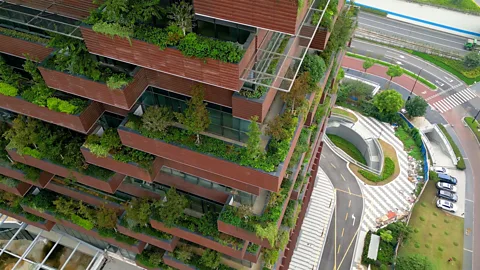 Stefano Boeri Architetti
Stefano Boeri ArchitettiSince the completion of Milan’s Vertical Forest, a green wave of plant-rich construction has begun reintroducing nature into our cities, from Dubai to Denver, Colorado; Antwerp to Arlington, Virginia; with Africa’s first vertical forest scheduled to break ground in Cairo later this year. Answering critics who doubted the concept’s affordability is the Trudo Vertical Forest in Eindhoven, The Netherlands (completed 2021), a social housing project with a rent cap of €600 (£510) per month.
A sense of connection
Over in Montpellier, France, a third of The Secret Gardens − a forested residential development designed by Vincent Callebaut Architectures, Paris, and due for completion later this year − will be reserved for affordable housing. In integrating practices such as rooftop agriculture and water recycling, The Secret Gardens also “addresses the climate crisis by restoring the human-nature connection”, Vincent Callebaut tells the BBC. “By transforming residents into urban gardeners and façades into carbon sinks, this building demonstrates that ecology isn’t a constraint but a lifestyle philosophy,” he says.
 BES Engineering
BES EngineeringThe power of these extraordinary structures to alter how people live and feel is central to their design. One of Vincent Callebaut Architectures’ latest designs is The Rainbow Tree (Cebu, Philippines), inspired by the psychedelic colours of the native Rainbow Eucalyptus Tree‘s bark. But the “tree” requires the collaboration of the residents of each of its 300 apartments to maintain its striking flora. This, along with its shared greenhouses and urban beehives, helps “foster social bonds”, says Callebaut, creating a sense of community and connection.
This notion that biophilic design (design that draws on humans’ innate connection with nature) can positively affect our wellbeing is supported by recent research. A study undertaken by Wageningen University in the Netherlands reported that the presence of plants in a work environment not only improved the attractiveness of the workspace, but also increased employee satisfaction. Workers also noticed the enhanced air quality and reported fewer health-related complaints.
In Wales, a 10-year study looking at the presence of anxiety and depression in 2.3 million medical records, found that the greenest home surroundings were associated with 40% less anxiety and depression than those living in the least green areas. People in poorer areas benefitted the most, with access to green spaces and water reducing the risk of anxiety and depression by 10% (6% in wealthier areas).
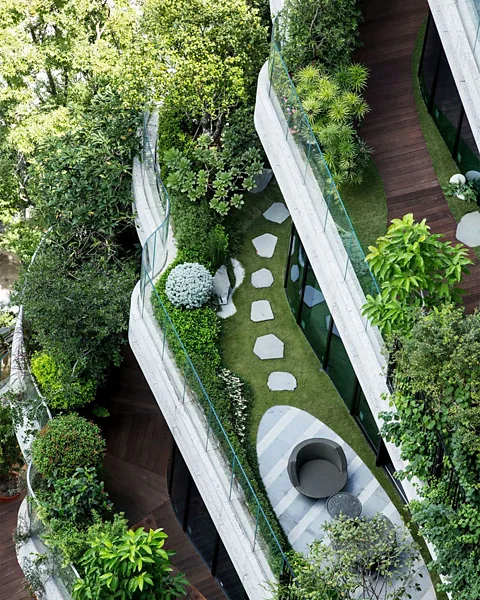 BES Engineering
BES EngineeringIt is perhaps unsurprising, then, that biophilic concepts are being commissioned for new hospitals. Callebaut’s Hospiwood 21, in La Louvière, Belgium, says the architect, “incorporates therapeutic vertical forests using greenery to reduce patient stress and enhance recovery”, and is furnished with a soothing biophilic interior full of cascading plants. Meanwhile, in Italy, Stefano Boeri’s New Policlinico Hospital Milan will feature a rooftop garden of more than 7,000 square metres. Biophilia is part of a rethinking of care facilities, says Boeri, that “opens up a new perspective on rehabilitation, going beyond the traditional concept of a facility for the mere long-term care of patients and becoming a true space of interaction and wellbeing in close contact with nature”.
In fact, the green tendrils of biophilic design are creeping into a huge range of buildings. Jewel Changi Airport, Singapore’s 10-storey leisure and retail complex, has been open to both air passengers and visitors since 2019, and boasts lush indoor forests comprising 1,400 trees, as well as the world’s tallest indoor waterfall (40m). In Amsterdam, the sustainable bamboo interior of the Hotel Jakarta (founded 2018) features a tropical garden in its central atrium that, quenched by rainwater from the roof, is fast advancing towards its 30-metre high ceiling. An hour away in Rotterdam, a rooftop forest, almost 40m above ground level, crowns The Depot, a publicly accessible storage facility for the vast art collection of the Museum Boijmans van Beuningen, and shaped like a giant mirrored cauldron.
As well as lifting our spirits, high-rise forests can play an important role in tackling climate change. Vincent Callebaut’s Tao Zhu Yin Yuan in Taipei, Taiwan, a 21-floor tower that is shaped like DNA’s double helix, was completed in 2024. Its 23,000 plants absorb an estimated 130 tons of CO2 each year, and their cooling effect on the façade reduces the need for air conditioning by 30%. The building features rotating balconies to maximise sun exposure, while the ventilation chimneys at its core reflects Callebaut’s interest in biomimicry (the emulation of nature’s systems to provide solutions to human problems) and function much like a lung, drawing in air at its base, purifying it, and then expelling it at the top.
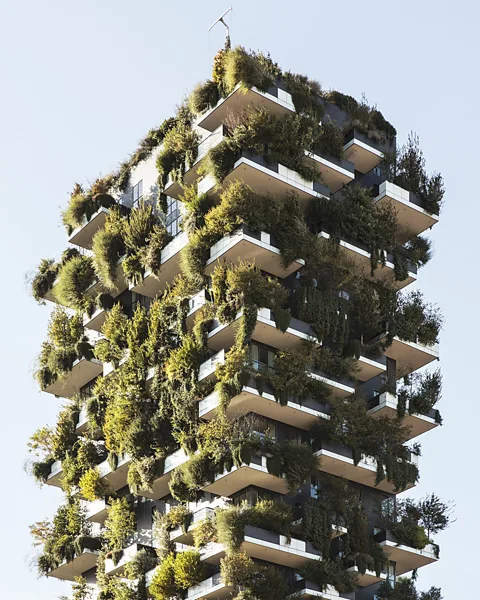 Boeri Studio/ Giovanni Nardi
Boeri Studio/ Giovanni NardiFar taller than they are wide, high-rise forests also minimise soil sealing, freeing up land for nature and reducing flood risk. “My projects embody a vision where cities are no longer climate problems but living solutions,” says Callebaut. Far from nature being “an obstacle or ornamental afterthought”, it’s the guiding principle of the design. Buildings now act, he says, as “inhabited trees… that absorb CO2, produce energy, and shelter biodiversity”. Responding to two major contemporary crises, global warming and declining mental health, biophilic buildings are already being envisaged as part of entirely forested cities. In Liuzhou in China’s Guangxi province, one of the world’s worst regions for smog, Stefano Boeri’s futuristic Forest City, housing around 30,000 inhabitants and generating all of its own energy, has been approved and is awaiting construction; while the firm’s Cancun Smart Forest City in Mexico, which plans to prohibit combustion-powered vehicles, is also awaiting starter’s orders.
Back in Milan, the building that began it all, with its rooftop solar panels, is indisputably tree-like, harvesting its energy from the sun and drawing up groundwater. “Nature is not something that exists in an immemorial past,” writes author and philosopher Emanuele Coccia in the book. “It is and will always be our technological future.” As for Boeri, the twin vertical forests he brought to life in Milan are not just buildings, he writes, but “a political manifesto” with “a simple and popular message: living nature has to return to inhabit the spaces conceived for humans. No more, no less”.


